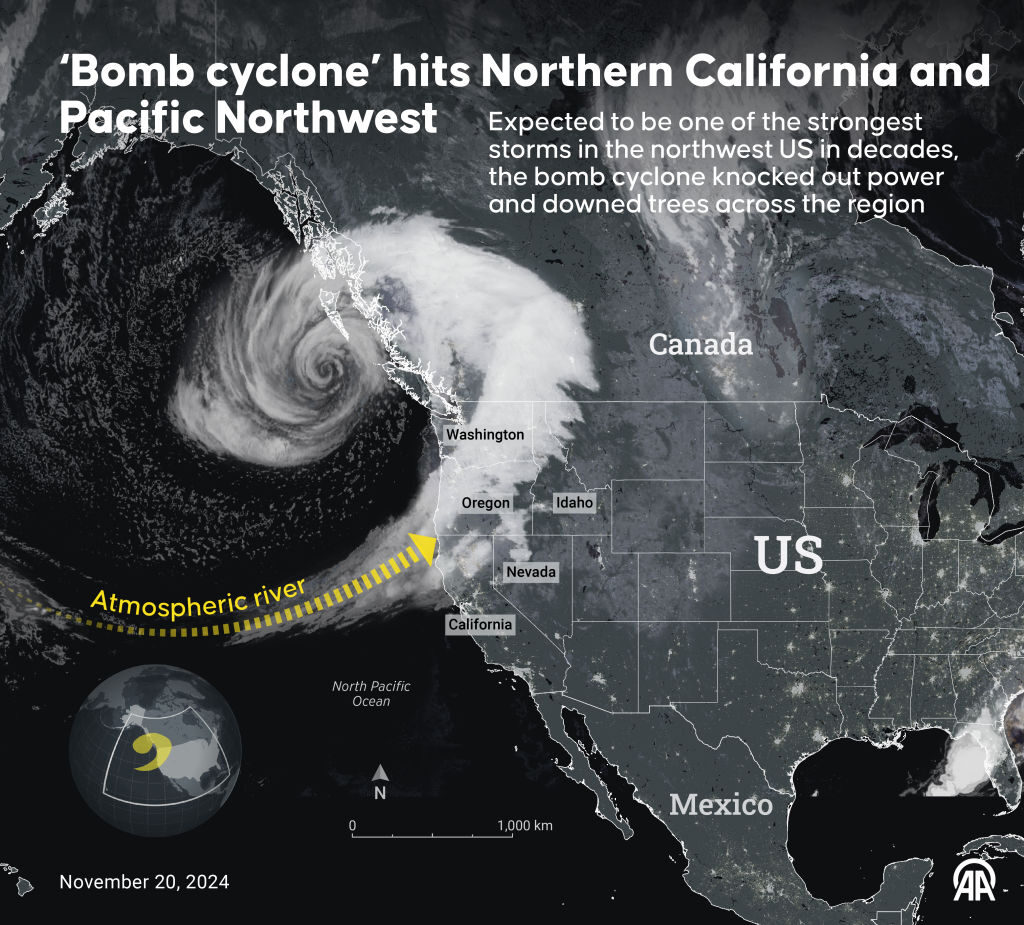We support our Publishers and Content Creators. You can view this story on their website by CLICKING HERE.
Intense winds smashed the Pacific Northwest on Wednesday morning as a strengthening low-pressure storm system, known colloquially as a “bomb cyclone,” moved in from the Pacific Ocean leaving chaos and at least one person dead in its wake along with mass power outages.
The rare storm system combines heavy rain with high wind to create what scientists call as an “atmospheric river.”
The phenomenon also known as “bombogenesis” could intensify so rapidly in the Pacific Northwest over the next 24-hours it has the potential to become a “triple-bomb” three times the strength of a regular bomb cyclone, according to the National Weather Service (NWS) in San Francisco.
The NWS has issued excessive rainfall risks starting running through to Friday because of the powerful storm expected to pummel northern California and the Pacific Northwest.
The Calm Before the Storm… Footage in Washington Shows the Eerie Calm Before Bomb Cyclone Descends
AP reports bomb cyclones have been associated with major weather events all over the country in recent years. Hurricane Milton, which made landfall in Florida last month as a Category 3 hurricane, was a recent example of a bomb cyclone, NWS notes.
A bomb cyclone in 2018, which helped popularize the term on social media, brought snow to the Southeast and winds that were close to hurricane force. Another in 2022 brought extreme weather and bitter cold to much of the country.
Reuters reports a woman was killed on Tuesday when a tree fell on a homeless encampment in Lynnwood, just north of Seattle, local fire department officials said on social media.
Two people were also injured when a tree fell on their trailer in Maple Valley, southeast of Seattle.

Expected to be one of the strongest storms in the northwest U.S. in decades, the bomb cyclone knocked out power and downed trees across the region. (Murat Usubali/Anadolu via Getty Images)
Reuters details schools across western Washington canceled classes or postponed the start of school on Wednesday.
The storm with tropical storm force winds of 50 miles per hour and gusts around 70 mph felled trees and power lines overnight.
It knocked out electricity to more than 600,000 homes and businesses in Washington, Southwest Oregon and Northern California, according to Poweroutage.us

 Conservative
Conservative  Search
Search Trending
Trending Current News
Current News 







